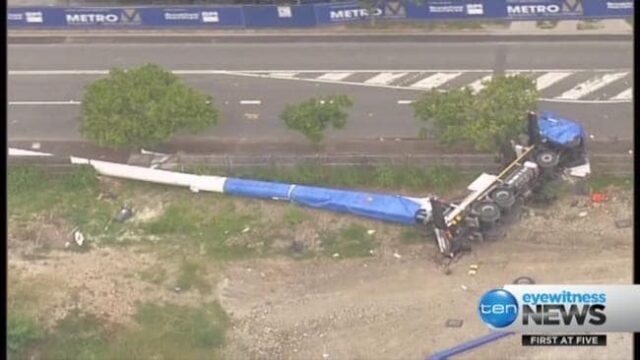A coronial inquest into the tragic death of Brisbane aerial photographer, Christopher Powell, who was in a 40-metre Elevated Work Platform (EWP) crane basket when it toppled, has called for stricter regulations.

In December 2015 Powell, alongside his son, were shooting marketing pictures on a vacant Brisbane construction site. The pair were high up on the EWP to document the view from the top floor of a yet-to-be-built 15-storey apartment block that now exists in the location.
The EWP toppled due to the stabiliser pad at the rear of the truck holding the crane being set on soft clay ground. The surface appeared solid, but counsel assisting the coroner, Mark Plunkett, described it as ‘like a pie crust’.
According to the inquest’s findings, Powell planned to capture photos from three positions. Minutes before the collapse, he had finished and was on his way down when he radioed the crane operator to say he wanted to capture a few additional photos from a lower height.
While in the lower position the crane operator, Bradley Sugden, heard a ‘noise’.
‘He looked around and saw that the ground directly underneath the rear passenger side short-legged outrigger was still there, but a hollow was forming around the base of the stabiliser pad,’ said coroner, Donald MacKenzie, who headed the inquest. ‘He could see the ground giving way under the stabiliser pad of the rear passenger side short-legged outrigger, which had commenced to slowly sink beneath the surface and into the ground.’
Sugden radioed the pair and began retracting the crane arm when the stabiliser sank further, with one side lifting off the ground causing the truck to capsize.
Powell, 41, was declared dead at the scene, while his teenage son Brendan was thrown metres from the basket and suffered severe injuries that would take years to rehabilitate. MacKenzie described his survival as ‘incredible’.
Sugden was found to have followed his training and cleared of criminal charges by Workplace Health and Safety Queensland. He wasn’t required to have experience identifying the layer of soft clay beneath the hard surface crust.
MacKenzie previous stated the inquest was ‘not an investigation as to who is at fault, who is liable, or who is guilty of an offence.’
‘It is abundantly clear what went wrong. This is an inquest to search for a mechanism, which will probably be a legislative one, to prevent any repetition of this tragic event.’
MacKenzie is calling for a mandate to the Mobile Crane Code of Practice 2006 requiring operators of EWP performing high-risk work with a boom of 11 metres or more to receive a geotechnical report for complex sites.
He also recommended EWP operators receive additional training by geotechnical experts on identifying unsure ground conditions, and how to interpret geothermic reports.
‘There will be a cost to developers, but in my view, this is a necessary reform to ensure workplace safety,’ Mr Mackenzie said.





Be First to Comment